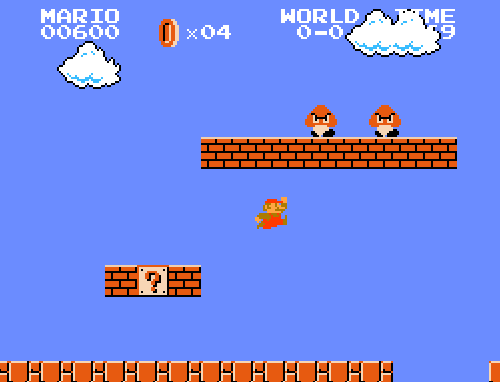Let’s go back in time. What’s the first videogame ever?
Right Answer #1
1962 Steve Russell & al. Bastard child of the military industrial complex. Based on a virtual planetarium. Rand on PDP-1 an early digital computer. Open source-ish collaborative creation (modding). Progenitor of Asteroids and all shooters.
Screen was a WWII radar – its roundness possibly affected the design of the game.
The interface was a bunch of awkwardly positioned switches. So they had to invent the joystick. Its mapping still dictates much of the movements in game spaces.
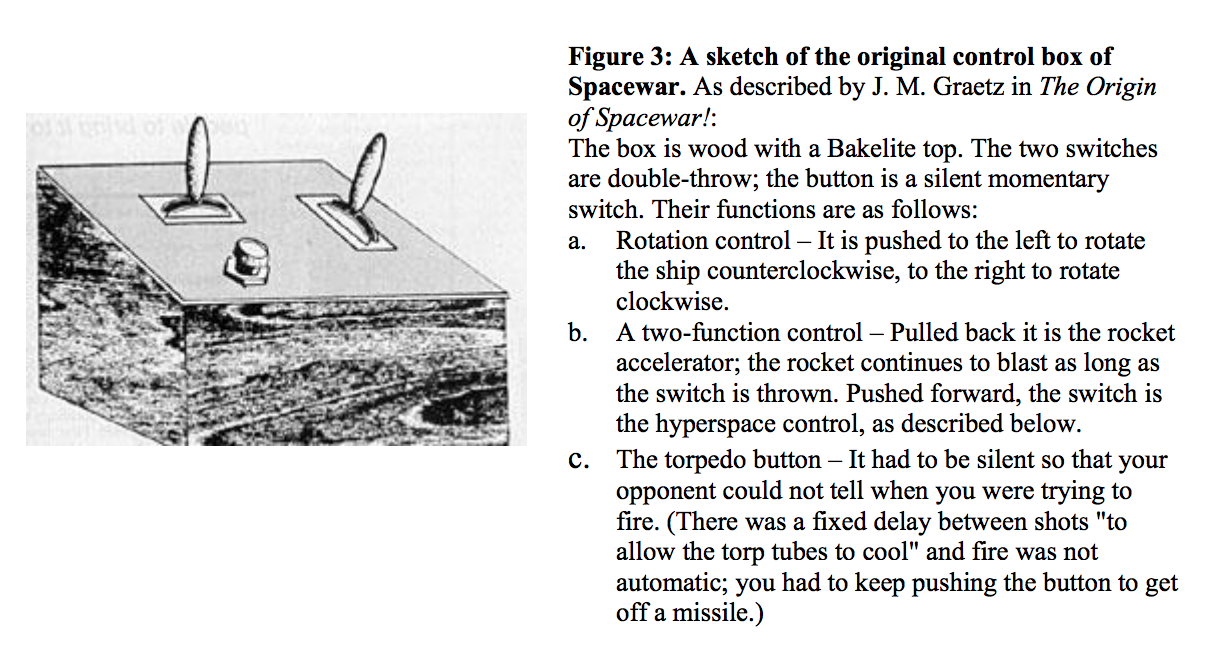
Right Answer #2
1958 William Higinbotham, Robert Dvorak. Analog computer, oscilloscope screen. Pacifist/scientific sibling of Spacewar. Progenitor of pong and all sports games.
Control system based on knobs which spawn a the commercial pong style controllers years later, now out of fashion (but somewhat closer to the analog stick than switches).
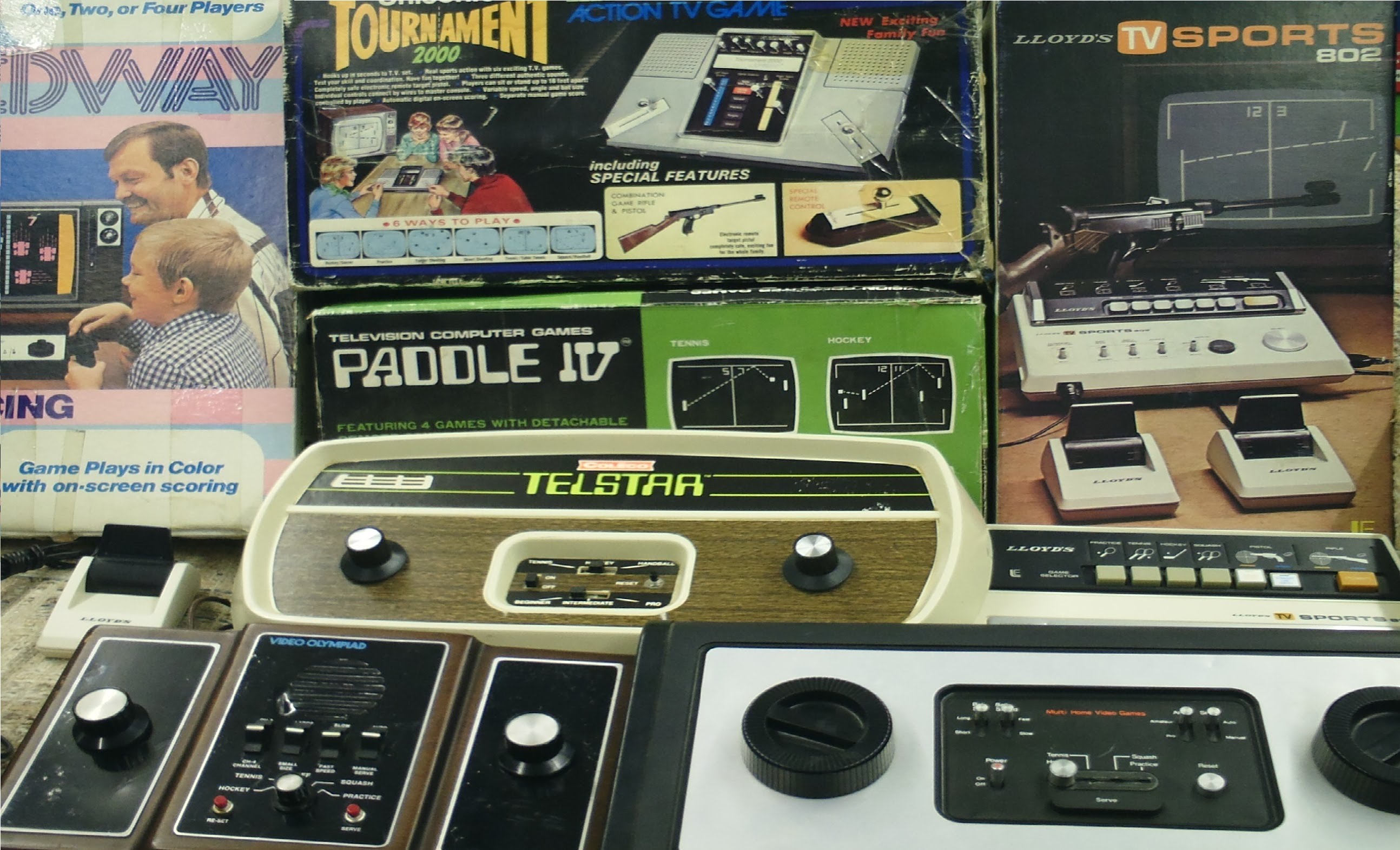
Control interfaces mostly stabilized until the advent of mouse and GUI in the early 90s (fostering less action oriented genres like RTS, puzzles, point and click adventures, and externalizing the look and aim to the mouse).
Game genres developed incrementally mainly by reimagining the relationship between the standard cartesian control system and player/avatar.
Asteroids (1979) – building upon Spacewar!
Inspired by the first video game Spacewar! – paddle + button. Vector screen, try the real deal at Games’n at
2 player Co-op, navigation subsystem
Lunar lander (1969-73-79) as sideway/sciencey spacewar?
Almost educational, a simulator.
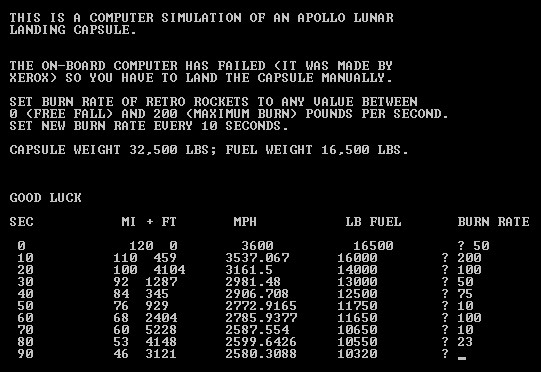
Site specific, custom controllers, multiplayer co-op
Free Download
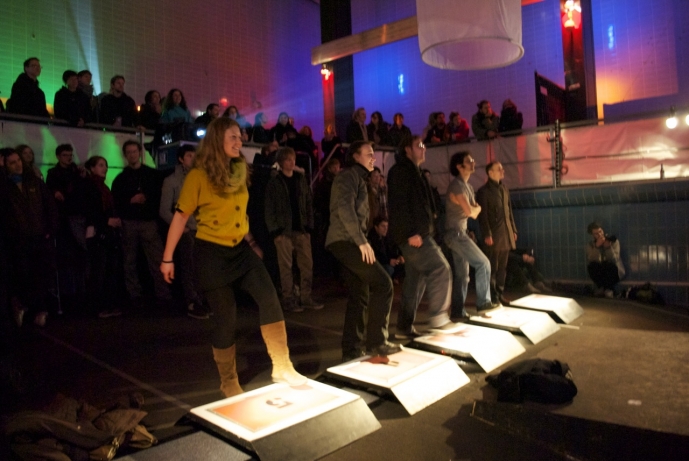
Breakout (1976) as single player pong
Programmed by Steve Wozniak and Jobs for Atari (building upon pong).
Gun fight/outlaw (1975) as pong retheming but also as early shooter
First human vs human violence. Same creator as Space Invaders.
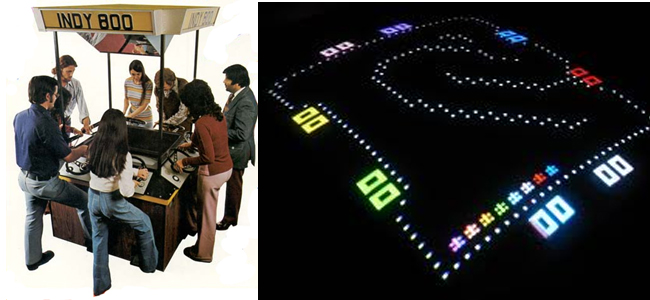
Early top down racing game. Similar to Deathrace, the first “controversial” game created the year before.
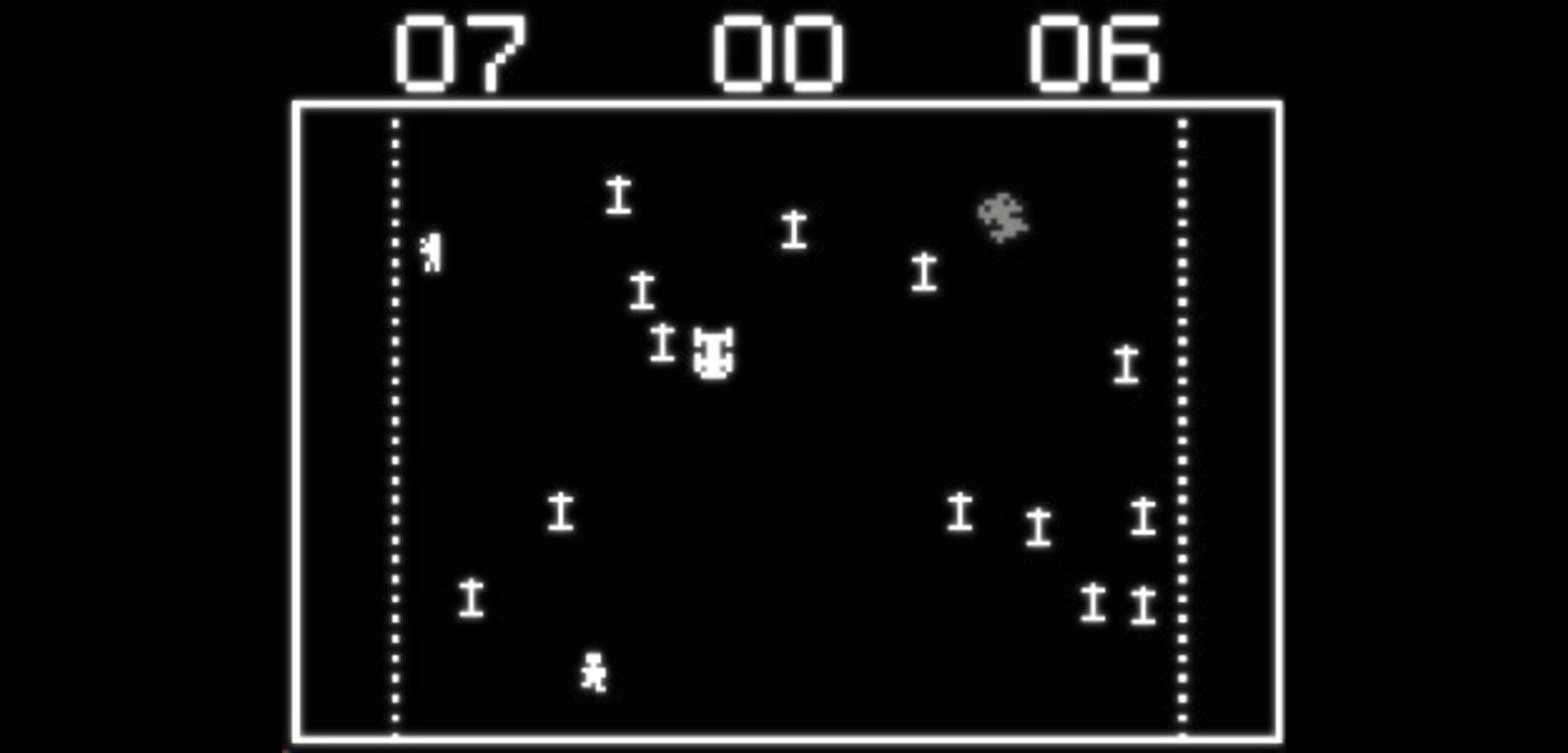
Space invaders (1978) – a combination of breakout and spacewar?

Massive hit both arcade and on Atari (killer app). Iconic.
Adventure (1980)
First action-adventure and fantasy game – conceived as a graphical version of Colossal Cave Adventure (the first narrative/text game) and progenitor of Zelda and open world games. Introduced/popularized inventory and expanded the 4 direction spatial movement beyond the screen i.e. the concept of exploration.
Robotron: 2084 (1982)
Perfecting Berzerk (top down dungeon crawler). Dual controls, still influential (geometry wars, binding of isaac). Precursor of WASD + mouse and twin stick shooters.
Chain reactions, sound effect blended with music, levels with different feels and strategies, enemies following a complex organic behavior
ET (1982)
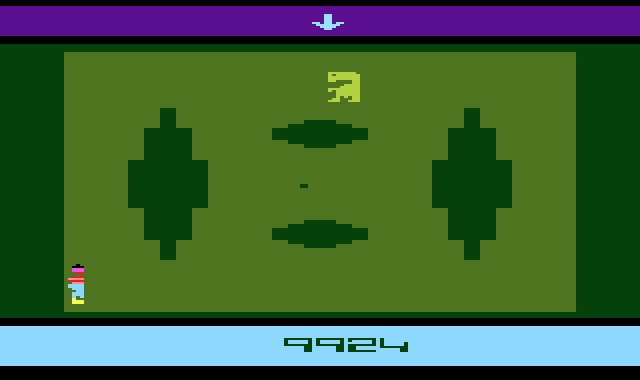
“Worst video game EVAR”. Along with the terrible Pacman port was blamed for the video game industry crash of 1983, saturation/overproduction crisis. Terrible tie-in result of the loss of control of designer and growing influence of publishers.

BUT Some interesting features: opening screen, disempowered protagonist, open world-ish.
Super Mario Bros. (1985) – builds upon previous single screen platformers Donkey Kong and Mario Bros
NES saving the industry marketing it as toy. That’s why we associate games with kids. Boy toy.
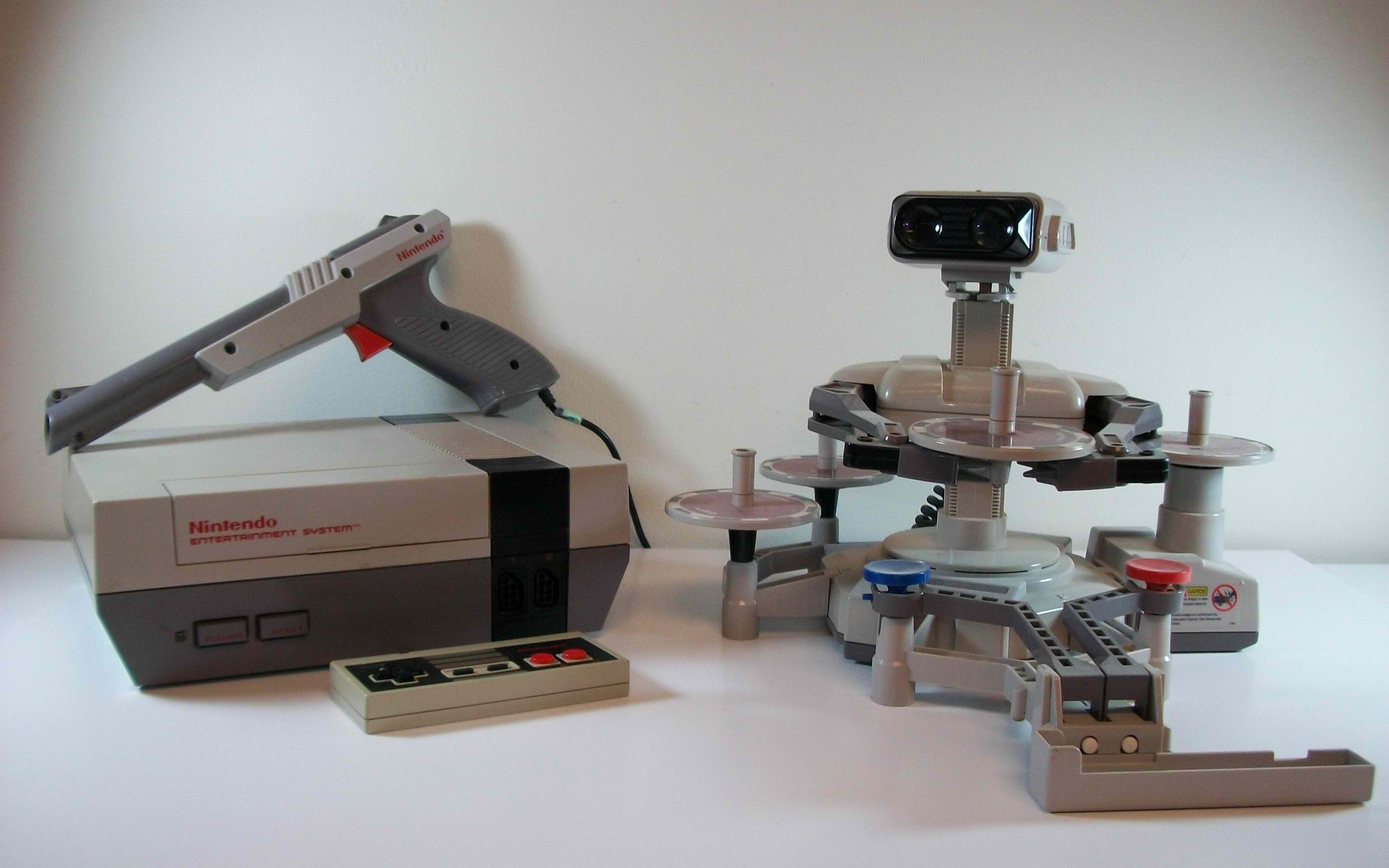
Canabalt (2009) – platformer via reduction
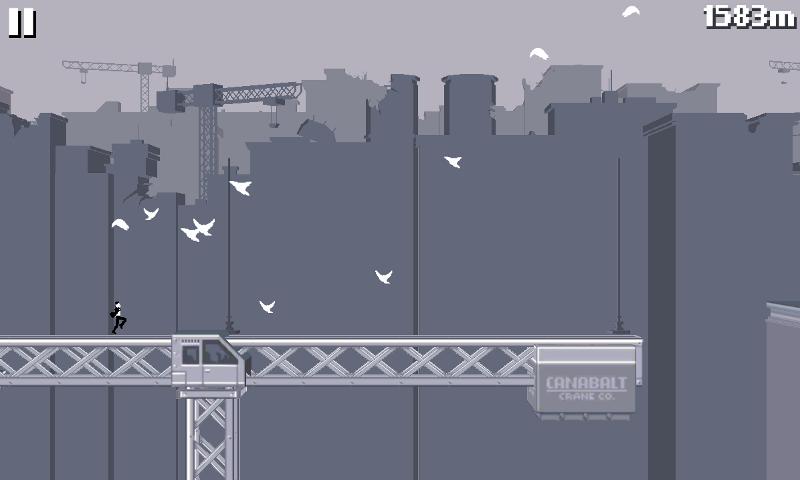
indie hit. Retro graphics. Flixel. One button game genre, procedural generation, environmental storytelling.
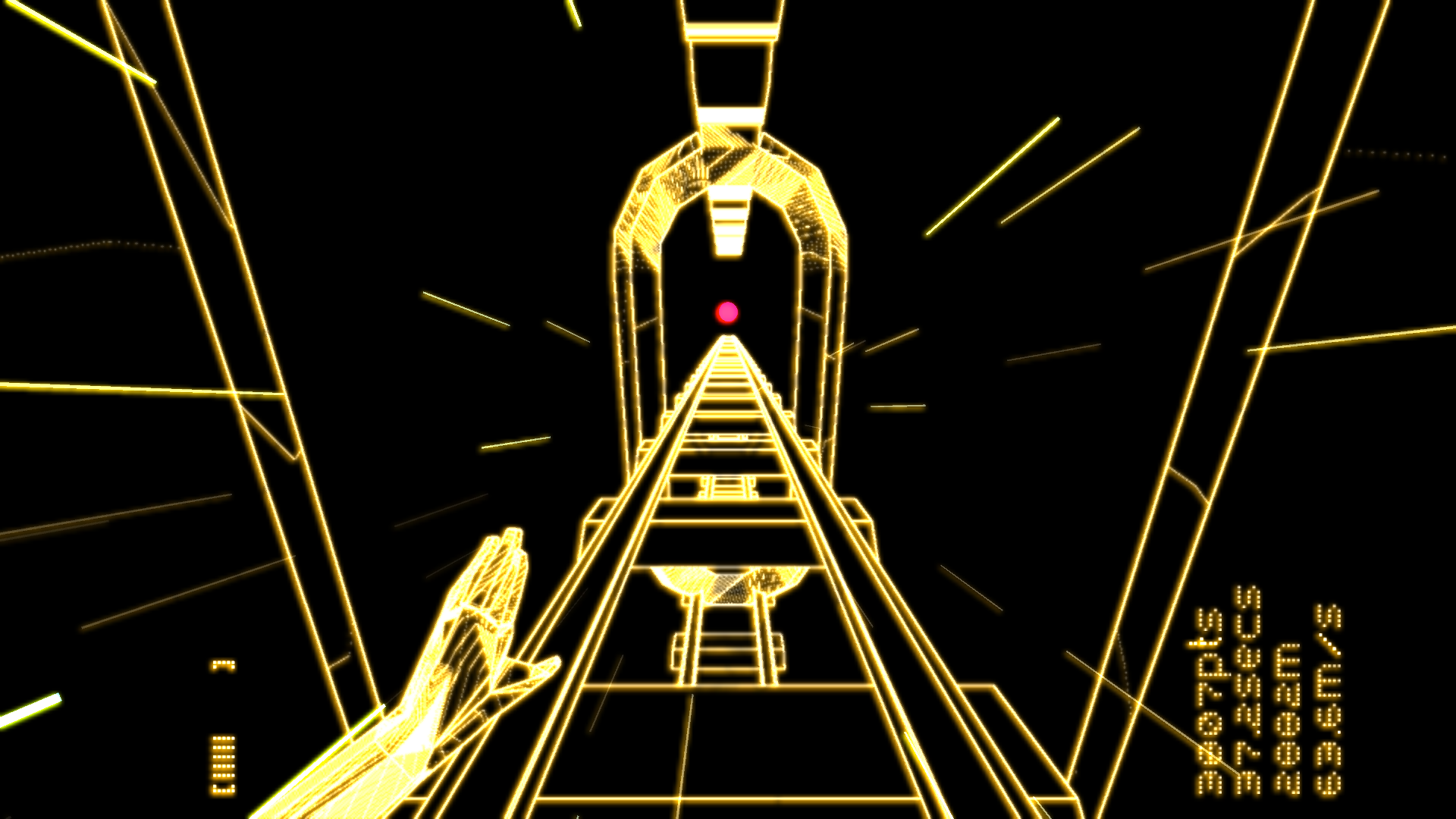
First person changes everything, press and hold, bonus, added vertigo/ilinx
Sonic – too fast?, but good “feel” and personality
Innovative control systems today
Some of these examples add new twists to established conventions, most of them determine the features of the worlds as levels are often designed around the player’s movement capabilities.
Katamary Damacy – twin analog manouvring
Noby Noby Boy – more twin stick analog weirdness
Osmos – movement as resource
QWOP – walking simulator
Envirobear – awkward micromanaging driving game
Luftrauser – reinventing shmups
Flywrench – multi-modal masocore
VVVVVV – reinventing jump
Mushroom 11 – biological physics
Super Hot – FPS as resource management
Hohokum – semi-useless but aesthetically crucial trail
Flower – flight sim without plane
Grow Home – floaty drunk robot
Crayon Physics – indirect control
World of Goo – physics toys
Braid – rethinking time
Thumper – reinventing rhythm games

